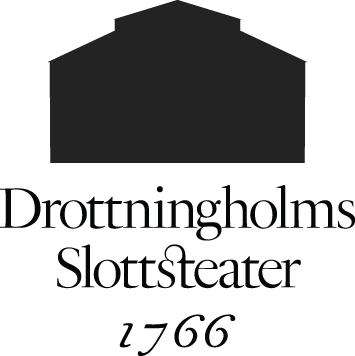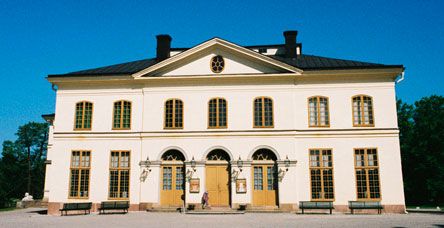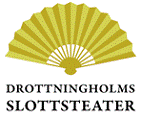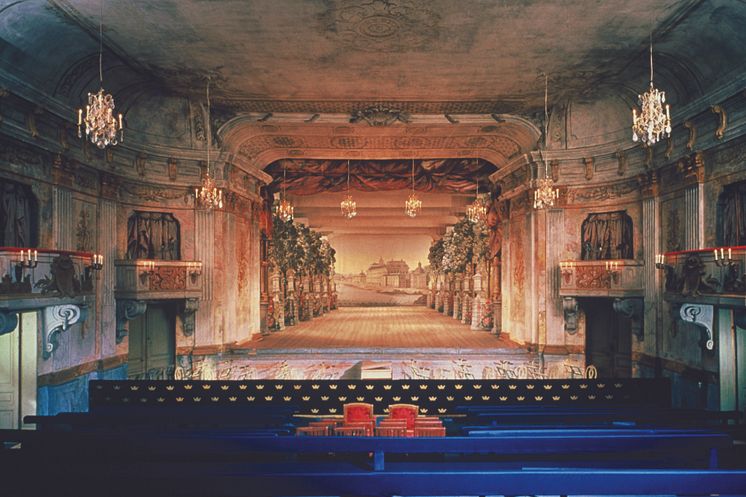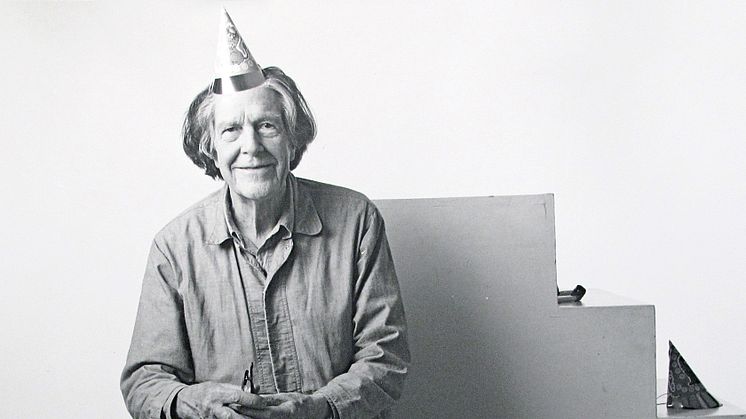
Pressmeddelande -
A Celebration of Sound – John Cage 100 Years Anniversary Concert
Drottningholm Palace Theatre
5th September, 2012
Time: 20.00 – 22.30
On the 5th of September 2012 John Cage would have turned 100 years. Joining in on the world-wide celebration of this centennial, Bonniers Konsthall together with Drottningholm Palace Theatre will arrange an evening of concerts in honor of his work and influence. This event will mark the start of Bonniers Konsthall's autumn exhibition More Than Sound and will be a contribution to the worldwide remembrance of Cage. It will be an evening that sees both Cage’s compositions and the performers own music, making this unique event in short, a celebration of Cage – and a celebration of sound.
Performers:
Malin Bång
Hans Ek and Modern Fantazias
Anna och Maria von Hausswolff
Carl Michael von Hausswolff with Michael Esposito
Scanner (Robin Rimbaud)
Anna, Eva and Maria Lindal with Love Derwinger
Hannah Törnell Wettermark
Stina Ekblad
Ika Johannesson, Moderator
For tickets please go to: www.ticnet.se
The concert initiates Bonniers Konsthall’s large group exhibition this Autumn More Than Sound, featuring work by leading Swedish and international artists. More than Sound will explore the nature of music and also be a place where music is created. Link to more information: http://www.bonnierskonsthall.se/utstallning/mer-an-ljud/
For more information please contact:
Miljam Johansson, Bonniers Konsthall, tel. +46-8-736 42 66, mirjam.johansson@bonnierskonsthall.se
Carin Balfe Arbman, Drottningholms Slottsteater, tel. +46-70-633 35 08, carin@balfe-arbman.com
Photo by: Steven Speliotis
***
THE PERFORMERS
Malin Bång — Through her musical compositions Bång develops the idea of movement and energy are the most essential components of music. Though regarded as a composer, Bång’s oeuvre spans a broad spectrum of mediums and collaborations, including: music for instrumental ensembles, orchestral music, staged music, electronic music, instrumental sound installations and performance pieces. As an active performer herself, Bång both improvises and performs live electronics, as well as her own setup of various toys and objects that expand her instrumental palette and create friction within her scores.
Hans Ek and Modern Fantazias — Hans Ek has, as a conductor and arranger for the last 25 years been at the forefront of the meeting between classical music, jazz, folk music and pop. He has in his exciting musical projects succeeded in blurring the boundaries between genres, and got new music to emerge. In the project "Modern Fantazia" Hans, and a chamber orchestra interpreted works of, among others, Claudio Monteverdi, John Cage, Henry Purcell and Ane Brun. The project was premiered at the Södra Teatern, Stockholm in April with two exclusive concerts. Part two of Modern Fantazias is a meeting between modernism, techno and improvisation with music by Kraftwerk, Eno, Stockhausen and Bowie.
Anna von Hausswolff — Anna von Hausswolff is a critically acclaimed singer, songwriter, and pianist who made her Top Five hit album debut with Singing from the Grave in 2010. In association with the independent label Kning Disk, von Hausswolff made her commercial recording debut with the Track of Time EP in 2010. It was well received by critics, who drew comparisons to singer/songwriters Kate Bush and Antony Hegarty, among others. The critical acclaim showered upon von Hausswolff set the stage for the breakout success of her full-length debut a couple months later.
Carl Michael von Hausswolff with Michael Esposito — Carl Michael von Hausswolff is a composer, visual artist and curator. Since the late 1970s, Hausswolff has worked as a composer, expanding his ongoing investigation of electricity, frequency and paranormal electronic interference. Hausswolff is recognized for pioneering the use of various recording devices as his primary instruments, making use of such instrumental devices as cameras, tape decks, radar and sonar.
Scanner — Scanner, by using new technologies as well as classical instruments, composes methodical ambience from infinite noise. Familiar sounds such as humming or soft breathing emerge from the fog of synthetics, revealing a humanistic quality that Scanner has always sought within digital technologies. His oeuvre, existing between museum spaces and open spaces, performed with 100 violinists and thoughtfully installed in white cubes, communicates a powerful universality of sound to listeners worldwide.
Maria Lindal — The violinist Maria Lindal is Concert Master of the Orchestra of the Drottningholm Theatre. She has previously worked with several of Europe's leading baroque orchestras such as Concerto Köln, Les Musiciens du Louvre and Norsk Barokkorkester. Maria is active as a musical coach and also gives master classes. She is the founder of a new institute for baroque music at Kulturama in Stockholm. Maria is trained at the Royal College of Music in Stockholm and studied baroque violin with Marc Destrubé in London.
Anna Lindal — violinist trained at Kungliga Musikhögskolan in Stockholm 1967–73, and in Luzern and Winterhur. She worked in Basel Sinfoniorchester and Basel Radioorchester 1979–81, was Concert Master in Stockholms Filharmoniska Orkester 1983–01. Visiting Professor in violin at Kungliga Musikhögskolan 2002-2008 and since 2008 Decan at the Art Faculty of Göteborgs University. Lindal was in 1995 elected member No. 902 of the Kungliga Musikaliska Akademin in Sweden, and is it’s vice preses.
Eva Lindal — violinist trained at Kungliga Musikhögskolan in Stockholm 1973-76. In 1986-2000 violinist at Sveriges Radios Symfoniorkester. Today freelance violinist playing baroque, contemporary and improvisational music. Works as concert master in groups like Drottningholms Baroque Ensemble, Gageego!, BIT 20 (Bergen) and Ensemble Recherche. In 2011 she played the part of the violinist Rose in Unga Dramaten’s play ”John and Svamparna”; a happening for children around John Cage’s music by Johan Petri.
Hannah Törnell Wettermark - was born in Åmål but lives now in Stockholm. Hannah has been studying at the Academy of Music and Drama in Göteborg and the Royal Scottish Conervatiore in Glasgow. She is now working as a free-lance flutist, mostly in orchestras around Stockholm but also in new music ensembles like “Curious Chamber Players” (Stockholm) and “Mimitabu” (Göteborg). Togehther with singer Helena Wahlström she has a duo called Afterval. Hannah has been the Swedish represent at “Lions international music competition” in Bournemouth and has been awarded with several prestigious scholarships.
Stina Ekblad — is a Swedish-speaking Finnish actress. She studied at Odenseteaterns elevskola 1972-75 and today she is part of the Kungliga Dramatiska Teatern in Stockholm’s regular ensemble. She received a Guldbagge Award for Best Actress in 1987 for her performances in Amorosa and Ormens väg på hälleberget. Stina has participated in several theatre, radio, television and film productions.
***
MORE INFORMATION
Bonniers Konsthall:
Bonniers Konsthall opened in the autumn of 2006 as a venue for Swedish and international contemporary art. Bonniers Konsthall aims to support the emergence of, and promote encounters with new art through the presentation of exhibitions, seminars, publications and providing studios for guest artists.
Bonniers Konsthall provides a space for the public to encounter new artistic projects. It works with artists at the beginning of their careers and commissions new works from more established artists. Bonniers presents a varied programme of solo exhibitions, thematic group exhibitions, and smaller art events in various formats that are occasionally produced in collaboration with partnering Swedish and international art institutions.
Sara Arrhenius has been Director of Bonniers Konsthall since its founding 2005. www.bonnierskonsthall.se
***
THE EXHIBITION More Than Sound, Bonniers Konsthall. 5th Sep – 2nd Dec.
What is music? And what makes it something that is more than sound? This autumn’s large group exhibition More Than Sound, featuring work by leading Swedish and international artists, will explore the nature of music and also be a place where music is made.
More Than Sound will focus on how music is being used and created within contemporary art. Bonniers Konsthall is presenting eleven artists whose artworks hover between the spheres of art, music and composition, none being strictly either or, and we will be able to consider varieties of music, or perhaps, varied uses of music, performed by artists and musicians. The music and works of art are not orchestrated to exhibit an amalgamated point of view. Rather, their differences are principal, and the experience of silence, which occurs between shifts, is seen as equally compelling.
Artists in exhibition: Tarek Atoui, Hans Berg with visualizations by Nathalie Djurberg, Malin Bång, Ayşe Erkmen, Carl Michael von Hausswolff, Susan Hiller, Matti Kallioinen, Haroon Mirza, Susan Philipsz, Scanner (Robin Rimbaud)
For more information: www.bonnierskonsthall.se/en/utstallning/mer-an-ljud/
***
ABOUT JOHN CAGE
“They say, "you mean it's just sounds?" thinking that for something to just be a sound is to be useless, whereas I love sounds just as they are, and I have no need for them to be anything more than what they are. I don't want them to be psychological. I don't want a sound to pretend that it's a bucket or that it's president or that it's in love with another sound. I just want it to be a sound.” John Cage
David Tudor sat down in front of a piano in 1952 silently for four minutes and thirty-three seconds, doing nothing. The piece was titled 4’33” and was written by John Cage. It is today probably the most famous piece of the twentieth century avant-garde. The score was the end result of years of sound, noise and alternative instruments. In a nutshell, Cage proposed that the future of music wasn’t the act of playing but rather the act of listening.
John Cage was born in 1912 in Los Angeles. He studied briefly at Pamona College and UCLA with amongst others the classical composer Arthus Schoenberg where he realized that the music he longed to make was radically different from that of his time. It didn’t take long however until Cage met with others equally interested in making art in manners that broke the rigid forms of the past. Two of his most important collaborators and friends were Merce Cunningham and Robert Rauschenberg.
Together with Cunningham and Rauschenberg, Cage began creating sound for performances and looked into ways to investigate how music was composed. One of these experiments involved chance procedures, that Cage found could become beautiful. A primary influence to Cage was the artist Marcel Duchamp, who with the notion of ‘ready-mades’ completely altered twentieth-century art. Much like Duchamp, Cage became intrigued by that which was already around him and found a music that wasn’t necessarily an expression from within himself but rather an organization of ‘ready-made’ sounds.
One of Cage’s first experiments engaged altered instruments like pianos with plates and screws in between their strings. But this soon evolved into the notion of entirely new instruments. Compositions such as “Imaginary Landscape No 4″ (1951) used twelve radios played at once and depended entirely on the chance broadcasts at the time of the performance for its actual sound. In “Water Music” (1952), he used shells and water to create another piece that was motivated by the desire to reproduce the operations that form the world of sound we find around us each day.
While Cage remained interested in chance and ‘ready-made’ sounds, he also began looking at technology and methods of recording amplification. In one piece for instance, “Cartridge Music” (1960), he amplified small household objects at a live performance. Toward the ’70’s, with inspirations like Thoreau and Joyce, Cage began to take literary texts and transform them into music. “Roratorio, an Irish Circus on Finnegan’s Wake” (1979), was an outline for transforming any work of literature into a work of music.
John Cage’s sense was that music was everywhere and could be made from anything. And while recognized as one of the most important composers of the century, influencing a wide range of musicians, his legacy extends far beyond the world of only music. Rather, what Cage left behind was a world of sounds that after what he did was open to anyone to enjoy.
Relaterade länkar
Ämnen
Regioner
Drottningholm Palace Theatre was built in 1766 and it is a unique world cultural heritage at the Royal domain of Drottningholm, Stockholm. The theatre performs new productions of 17th and 18th century opera in original settings, but also has a clear vision of approachability and innovation. The theatre aims to be a lively, open-minded and generous theatre, strongly rooted in its tradition and history but at the same time directing its gaze towards the future and the world around us. This year's Summer Season offers classical operas, Peter Mattei, family concerts, divertissements, music in the park and much more. Sofi Lerström is the Managing Director of the theatre since 2011. www.dtm.se
